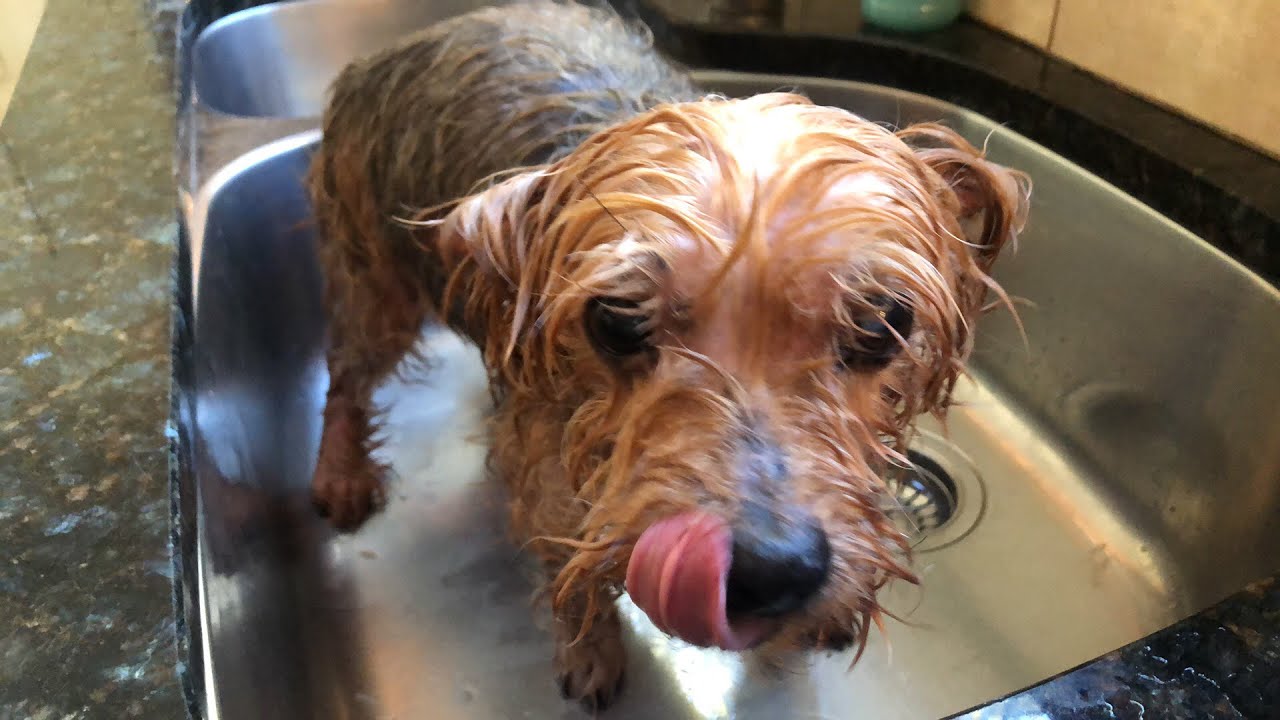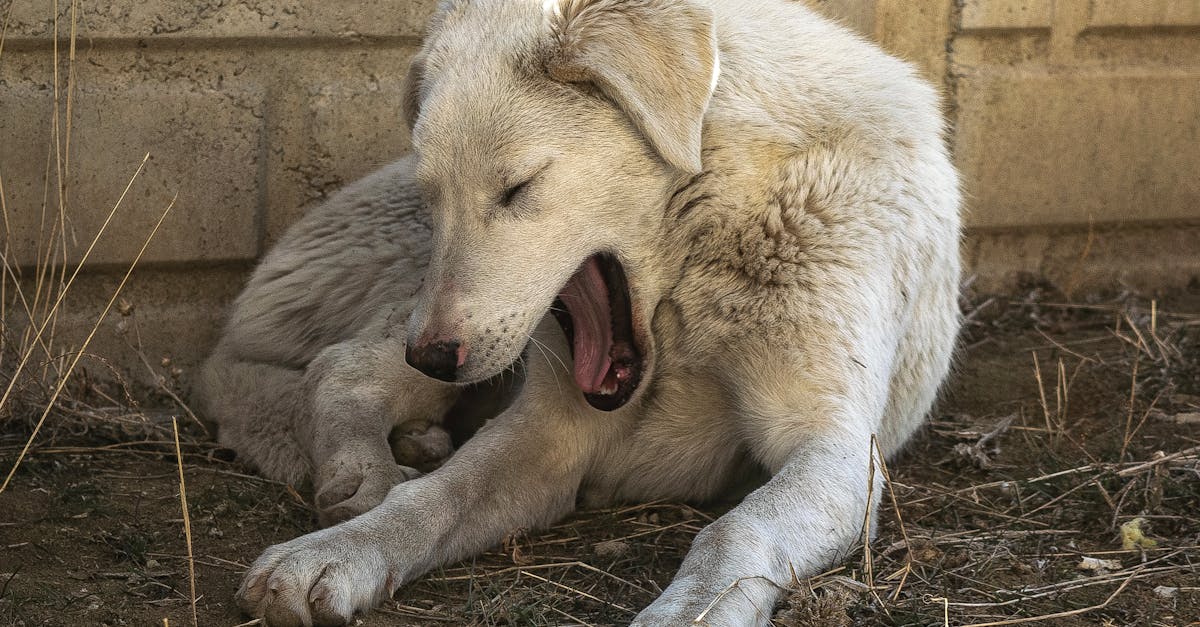Lethargic Dog? 7 Signs You Shouldn’t Ignore
Discover why your dog might be lethargic and learn how to identify causes. Get expert tips on intervention and prevention to ensure your pet stays energetic and healthy.
Is your usually energetic pup suddenly spending more time in bed than playing fetch? You might be dealing with a lethargic dog. Lethargy in dogs is a common symptom that can signal various health issues, from minor fatigue to more serious conditions.
We’ll explore the signs of lethargy in dogs and help you understand when it’s time to be concerned. Lethargy isn’t just about being tired; it’s a state of sluggishness or drowsiness that can significantly impact your dog’s daily life. From reduced interest in food and toys to reluctance in going for walks, we’ll cover the key indicators that distinguish normal tiredness from potentially problematic lethargy.
By the end of this article, you’ll be equipped with the knowledge to recognize lethargy in your furry friend and understand when it’s time to consult your veterinarian. Let’s jump into the industry of canine lethargy and ensure our four-legged companions stay happy and healthy.
Understanding Lethargy in Dogs
Lethargy in dogs is a common symptom that can indicate various health issues. It’s crucial for dog owners to recognize the signs and understand when to seek veterinary care.
What is Lethargy?
Lethargy in dogs is characterized by a important decrease in energy and activity levels. It’s a state where dogs show less animation than usual or exhibit reduced activity from their normal day-to-day function. Signs of lethargy include:
- Extreme tiredness or sleepiness
- Low energy and reluctance to move
- Lack of interest in food, treats, or favorite toys
- Remaining in their bed or crate for extended periods
- Unwillingness to engage in usual activities like walks or playtime
- Decreased responsiveness to stimuli or commands
- Weakness or difficulty standing and walking
Dogs experiencing lethargy may appear uninterested in their surroundings and show little enthusiasm for activities they typically enjoy.
Lethargy vs. Normal Tiredness
Distinguishing between lethargy and normal tiredness is essential for determining if a dog is experiencing a health issue.
Normal Tiredness:
- Usually occurs after physical activity or a busy day
- Dogs can be roused with favorite treats or stimuli
- They respond to doorbell rings or the sound of their leash
- Energy levels typically return to normal within 24 hours
Lethargy:
- Persists beyond 24 hours
- Dogs show little to no interest in food, treats, or favorite activities
- They remain unresponsive to usual stimuli
- May be accompanied by other symptoms like vomiting or diarrhea
- Can indicate underlying health issues requiring veterinary attention
If a dog’s low energy persists or is accompanied by other concerning symptoms, it’s crucial to consult a veterinarian for proper diagnosis and treatment.
Signs and Symptoms of a Lethargic Dog
Recognizing the signs and symptoms of a lethargic dog is crucial for early intervention and proper care. These indicators can be categorized into physical symptoms and behavioral changes.
Physical Symptoms
Lethargic dogs often exhibit noticeable physical changes:
- Decreased activity level: Dogs spend more time resting or sleeping than usual.
- Weakness: Difficulty standing or walking, appearing unsteady or wobbly.
- Appetite changes: Loss of interest in food or complete refusal to eat.
- Gastrointestinal issues: Vomiting or diarrhea may accompany lethargy.
- Gum appearance: Dry or pale gums, indicating potential dehydration or anemia.
- Altered hydration habits: Increased thirst or changes in urination patterns.
- Breathing changes: Labored breathing or excessive panting, different from normal respiratory patterns.
These physical symptoms can vary in severity and may occur in combination, signaling the need for veterinary attention.
Behavioral Changes
Lethargic dogs also display distinct behavioral shifts:
- Reduced responsiveness: Decreased reaction to commands, toys, or familiar stimuli.
- Lack of enthusiasm: Disinterest in previously enjoyed activities like walks or playtime.
- Altered sleep patterns: Excessive sleeping or difficulty waking up.
- Social withdrawal: Avoiding interaction with family members or other pets.
- Mood changes: Appearing depressed, anxious, or irritable.
- Decreased grooming: Neglecting self-care routines like licking or cleaning.
- Unusual postures: Adopting abnormal positions when resting or moving.
These behavioral changes, especially when combined with physical symptoms, indicate a potential health issue requiring professional assessment. Monitoring these signs helps dog owners identify lethargy and seek timely veterinary care.

Common Causes of Lethargy in Dogs
Lethargy in dogs can stem from various sources, ranging from minor issues to serious health conditions. Understanding these causes is crucial for dog owners to ensure their pets receive appropriate care and attention.
Medical Conditions
Medical conditions are a primary cause of lethargy in dogs. Infections, whether bacterial, viral, fungal, or parasitic, can lead to sluggishness as the dog’s body fights off the invaders. Inflammation from arthritis, injuries, or autoimmune disorders often results in reduced activity levels. Anemia, characterized by a lack of red blood cells, causes weakness and fatigue, along with pale gums and shortness of breath. Dogs with diabetes may experience lethargy due to fluctuating blood sugar levels, accompanied by increased thirst and urination. Kidney disease can lead to lethargy as waste products accumulate in the body. Cancer and its treatments can also cause extreme tiredness and lack of energy in affected dogs.
Environmental Factors
Environmental factors play a important role in causing lethargy in dogs. Extreme temperatures, such as intense heat or cold, can lead to reduced activity levels as dogs conserve energy to regulate their body temperature. Poor air quality, including high pollution levels or allergens, may cause respiratory discomfort and subsequent lethargy. Inadequate living conditions, such as cramped spaces or lack of proper ventilation, can contribute to a dog’s sluggishness. Changes in routine or environment, like moving to a new home or the introduction of a new pet, can cause stress-induced lethargy. Insufficient mental stimulation or physical exercise can also result in a lethargic state, as dogs may become bored or depressed without proper engagement.
Age-Related Causes
Age-related factors often contribute to lethargy in older dogs. As dogs age, their metabolism slows down, leading to decreased energy levels and reduced physical activity. Arthritis and joint pain become more common in senior dogs, making movement uncomfortable and resulting in lethargy. Cognitive decline, similar to dementia in humans, can cause confusion and reduced interest in activities, contributing to a lethargic appearance. Age-related hormonal imbalances, such as hypothyroidism, can slow down bodily functions and lead to fatigue. Decreased sensory perception, including diminished eyesight and hearing, may cause older dogs to become less responsive and appear lethargic. Also, age-related organ function decline, particularly in the heart and lungs, can result in reduced stamina and increased fatigue in senior dogs.
When to Be Concerned About a Lethargic Dog
Lethargy in dogs can indicate various health issues, from mild to severe. It’s crucial to recognize when your dog’s sluggishness requires veterinary attention.
Red Flags and Warning Signs
Changes in behavior signal potential lethargy concerns. A important decrease in energy, reluctance to engage in usual activities, or lack of interest in favorite toys or treats are key indicators. Persistent lethargy lasting more than a day or two without improvement is a cause for concern. Unlike normal tiredness, lethargy doesn’t resolve with rest alone.
Look for additional symptoms accompanying lethargy:
- Vomiting or diarrhea
- Loss of appetite
- Pale gums
- Bloated stomach
- Excessive panting
- Restlessness
- Changes in water consumption
These symptoms, combined with lethargy, warrant immediate veterinary attention. Monitor your dog’s behavior closely, noting any deviations from their normal patterns.
Emergency Situations
Certain situations require immediate emergency veterinary care:
- Collapse or inability to stand
- Difficulty breathing or rapid, shallow breaths
- Severe vomiting or diarrhea (especially with blood)
- Seizures or loss of consciousness
- Extreme lethargy with unresponsiveness
- Sudden swelling, especially in the abdomen
- Signs of severe pain (whining, yelping, aggression when touched)
- Profuse bleeding or open wounds
- Suspected ingestion of toxic substances
- Inability to urinate or defecate
In these cases, don’t wait for symptoms to worsen. Seek emergency veterinary care immediately to ensure the best possible outcome for your lethargic dog.
Diagnosing Lethargy in Dogs
Diagnosing lethargy in dogs requires a comprehensive approach to identify the underlying cause. Veterinarians employ various methods and tests to determine the root of the problem and develop an effective treatment plan.
Veterinary Examination
A thorough veterinary examination is the first step in diagnosing lethargy in dogs. The process typically includes:
- Medical history review: We’ll ask about recent changes in behavior, diet, or environment.
- Physical examination: This involves checking for signs of weakness, pain, or abnormalities.
- Abdominal, spine, and joint palpation: We assess for any tenderness or swelling.
- Gum color and hydration status evaluation: These indicators help assess overall health.
- Observation of behavior and responsiveness: We look for signs of reduced activity or interest.
By conducting a comprehensive examination, we can identify potential causes of lethargy and determine the next steps in the diagnostic process.
Diagnostic Tests
To further investigate the cause of lethargy in dogs, we may recommend various diagnostic tests:
- Blood work: Complete blood count (CBC) and biochemistry panel to check for infections, anemia, or organ dysfunction.
- Urinalysis: Helps detect urinary tract infections, kidney issues, or diabetes.
- Fecal tests: Identify parasites or digestive problems.
- X-rays: Examine the chest and abdomen for abnormalities in organs or bones.
- Ultrasound: Provides detailed images of internal organs and structures.
- Electrocardiogram (ECG): Assesses heart function and rhythm.
- Advanced imaging: CT scans or MRIs for more complex cases.
These tests help us pinpoint the underlying cause of lethargy and develop an appropriate treatment plan. We’ll select the most relevant tests based on the dog’s symptoms and physical examination findings.
Treatment Options for Lethargic Dogs
Treating a lethargic dog involves addressing the underlying cause and implementing appropriate interventions. We’ll explore medical treatments and lifestyle adjustments to help your canine companion regain their energy and vitality.
Medical Interventions
When addressing lethargy in dogs, veterinarians employ various medical interventions based on the diagnosis. These interventions include:
- Medications:
- Antibiotics for bacterial infections
- Antiviral drugs for viral infections
- Anti-inflammatory drugs for conditions like arthritis
- Heart medications and diuretics for cardiovascular issues
- Insulin injections for diabetes management
- Fluid Therapy:
- Intravenous (IV) fluids to combat dehydration
- Electrolyte answers to restore balance
- Blood Transfusions:
- For severe anemia or blood loss
- Surgical Procedures:
- To remove tumors or address internal injuries
- Chemotherapy:
- For cancer treatment
- Hormone replacement therapy:
- For Endocrine Disorders Like Hypothyroidism
Veterinarians may also prescribe supportive treatments such as anti-nausea medications, pain relievers, or appetite stimulants to alleviate symptoms and improve the dog’s comfort during recovery.
Lifestyle Adjustments
Alongside medical interventions, lifestyle adjustments play a crucial role in treating lethargy in dogs:
- Diet Modifications:
- Balanced, nutrient-rich meals customized to the dog’s exact needs
- Increased frequency of smaller meals for easier digestion
- Addition of supplements as recommended by the veterinarian
- Exercise Routine:
- Gradual increase in physical activity as the dog’s energy improves
- Low-impact exercises for dogs with joint issues or recovering from illness
- Mental stimulation through puzzle toys and training sessions
- Environmental Changes:
- Creating a comfortable, stress-free living space
- Maintaining optimal temperature and humidity levels
- Reducing exposure to allergens or irritants
- Rest and Recovery:
- Ensuring adequate sleep and quiet time for healing
- Limiting strenuous activities during recovery periods
- Regular Veterinary Check-Ups:
- Monitoring progress and adjusting treatment plans as needed
- Preventive care to avoid future health issues
By combining appropriate medical interventions with customized lifestyle adjustments, we can effectively address lethargy in dogs and help them regain their energy and zest for life.
Preventing Lethargy in Dogs
Preventing lethargy in dogs involves maintaining overall health and scheduling regular check-ups. By focusing on these key areas, dog owners can help ensure their pets remain energetic and active.
Maintaining Overall Health
Maintaining a dog’s overall health is crucial in preventing lethargy. A balanced diet customized to the dog’s age, size, and activity level provides essential nutrients for energy production. Regular exercise, appropriate for the dog’s breed and physical condition, helps maintain muscle tone and cardiovascular health. Adequate hydration is essential, with fresh water always available. Mental stimulation through interactive toys and training sessions prevents boredom-induced lethargy. Proper grooming, including regular brushing and bathing, promotes overall well-being. Consistent sleep patterns in a comfortable environment contribute to energy levels. Managing stress through a stable routine and a calm home atmosphere helps prevent anxiety-related lethargy. Addressing any underlying health issues promptly prevents them from developing into more serious conditions that cause lethargy.
Regular Check-ups
Regular veterinary check-ups are essential in preventing lethargy in dogs. These appointments allow veterinarians to detect and address potential health issues before they escalate. During check-ups, vets perform physical examinations, including checking vital signs, weight, and body condition. They assess the dog’s overall health, looking for signs of illness or disease that could lead to lethargy.
Routine blood tests and urinalysis can reveal underlying conditions like anemia or kidney disease. Vaccinations are updated to prevent infectious diseases that can cause lethargy. Dental examinations and cleanings prevent oral health issues that may affect energy levels.
Parasite prevention and control measures are implemented to avoid energy-draining infestations. Nutritional counseling ensures the dog’s diet supports optimal energy levels. Age-appropriate screenings for conditions like arthritis or thyroid disorders help catch potential causes of lethargy early. Regular check-ups also allow for monitoring of chronic conditions and adjusting treatment plans as needed to maintain the dog’s energy and quality of life.
Final Thought on Lethargic Dog
Recognizing and addressing lethargy in dogs is crucial for their health and well-being. We’ve explored the signs symptoms causes and treatments for this common issue. By staying vigilant and seeking prompt veterinary care when needed dog owners can ensure their furry friends lead happy active lives. Remember that prevention is key. Regular check-ups a balanced diet and proper care go a long way in keeping our canine companions energetic and thriving. With the right knowledge and proactive approach we can help our dogs overcome lethargy and enjoy life to the fullest.

